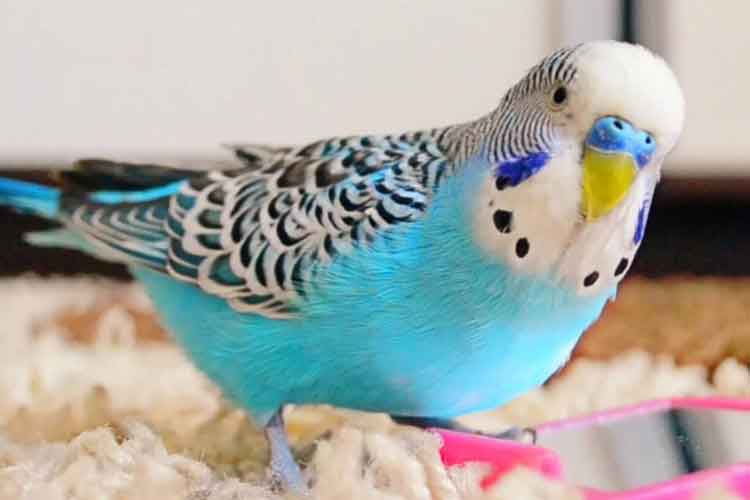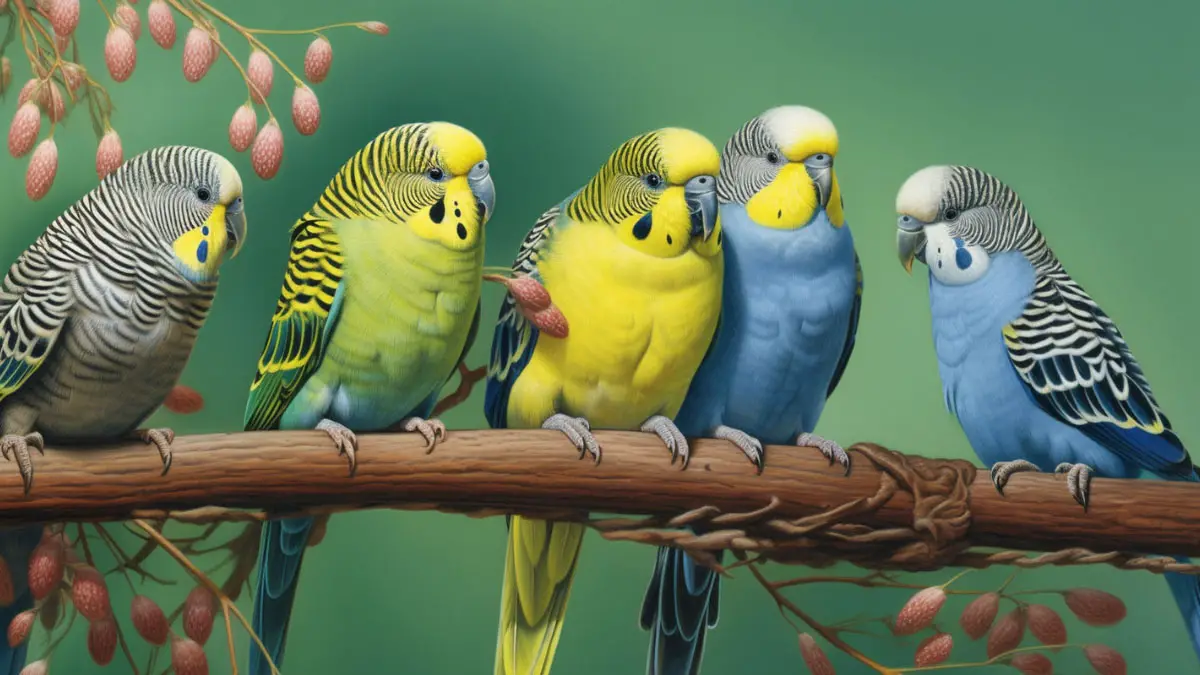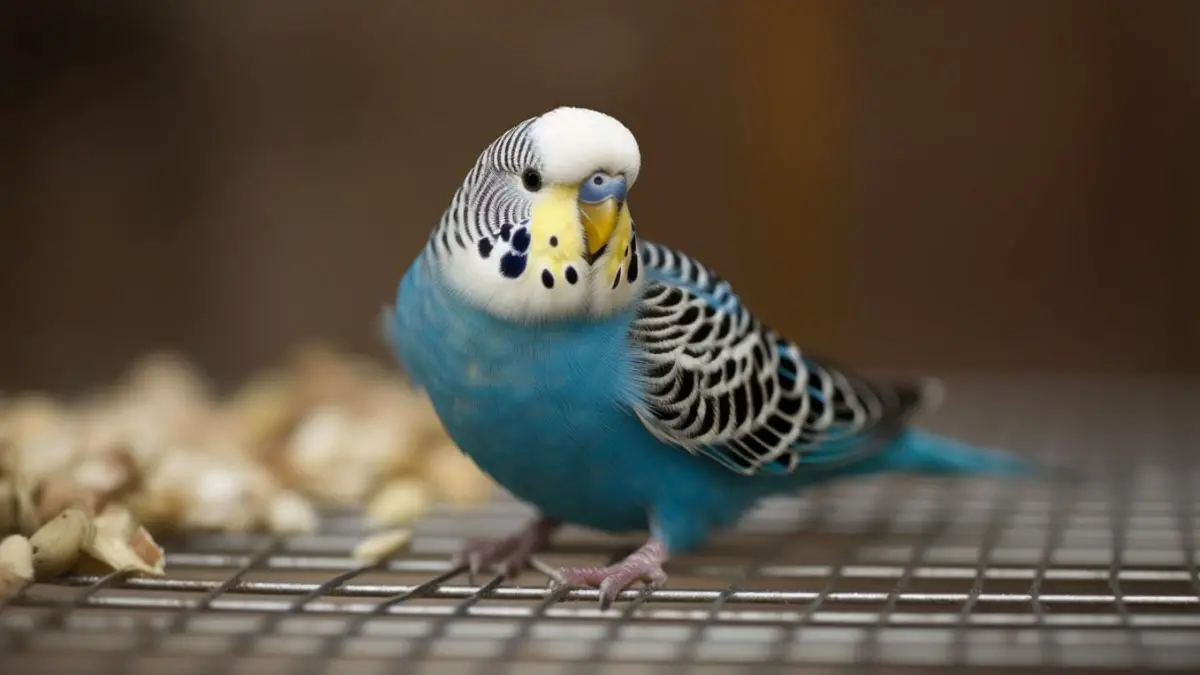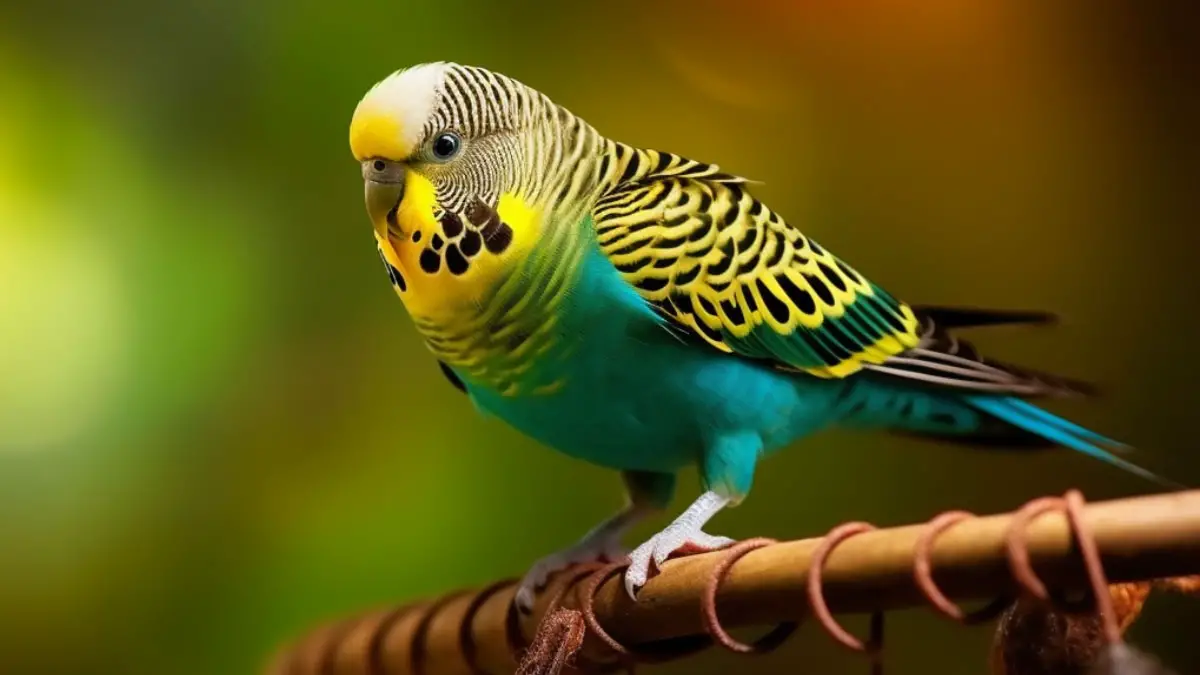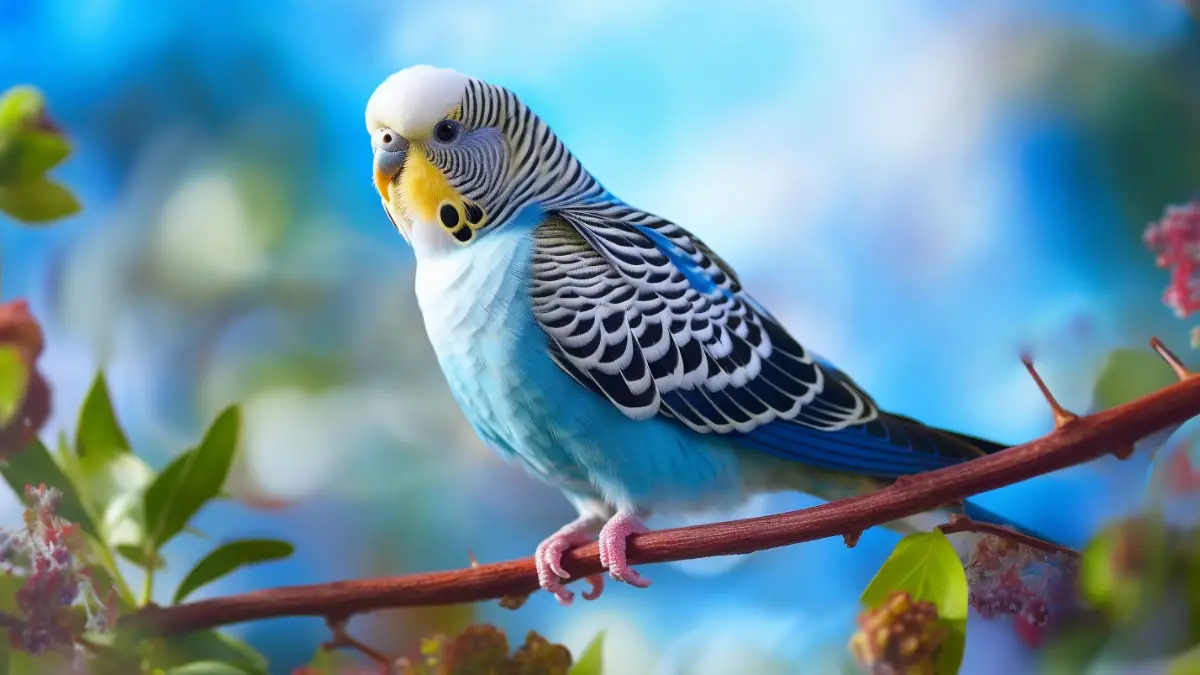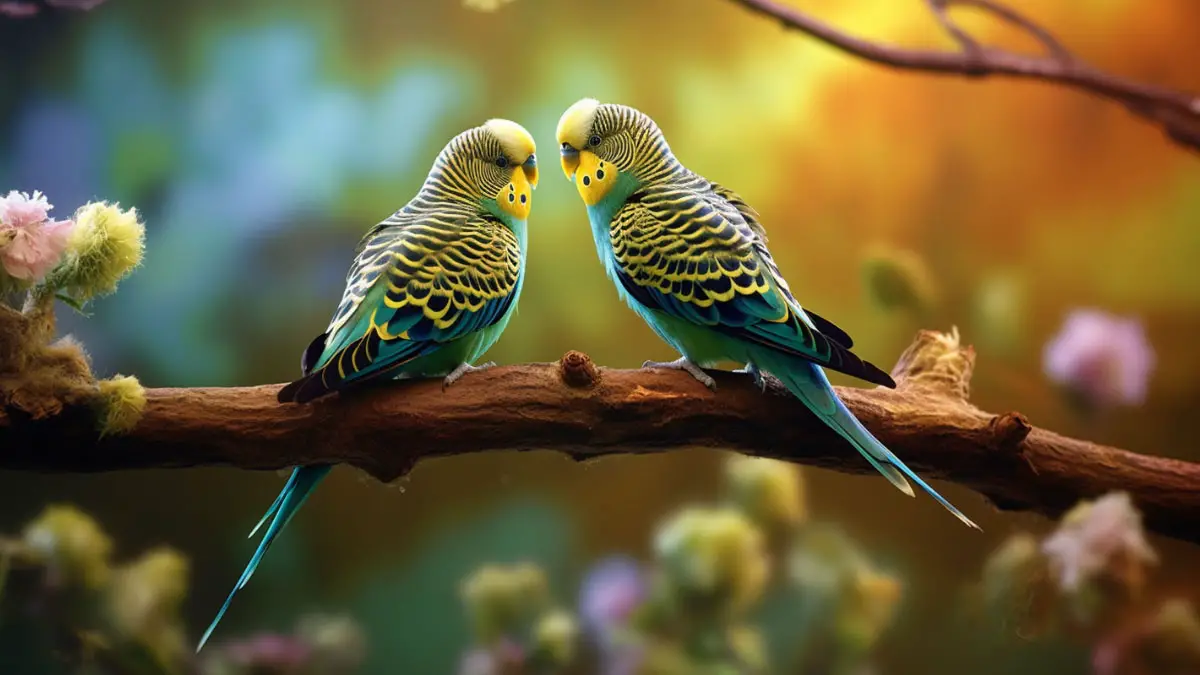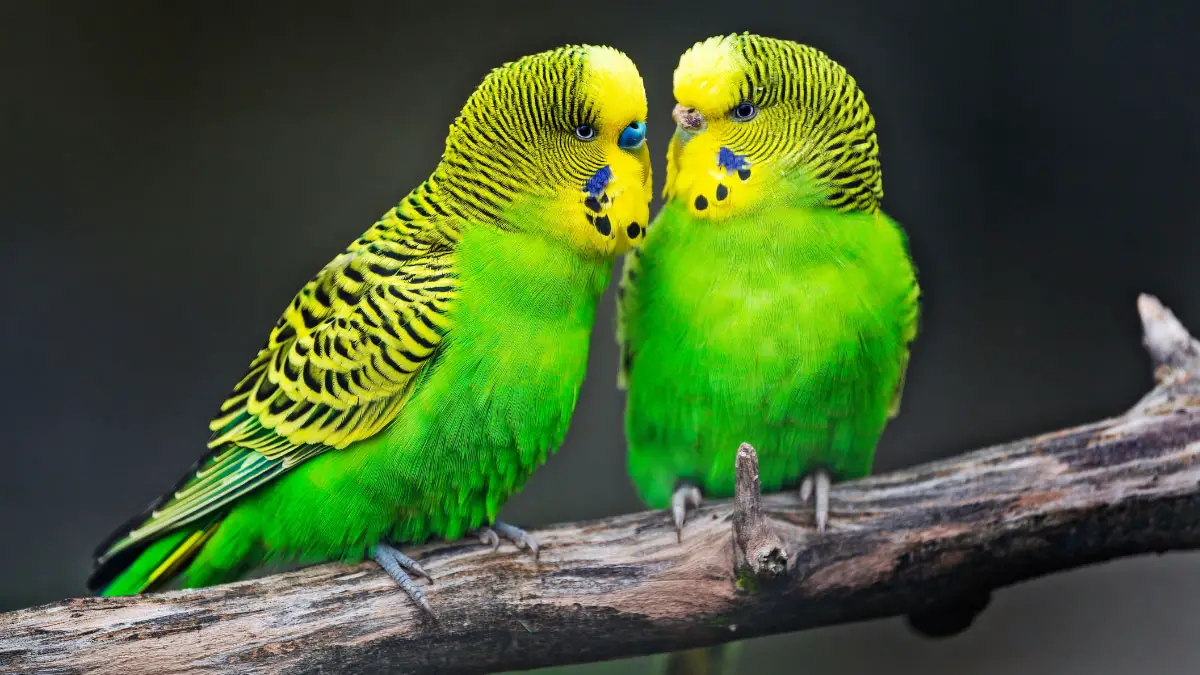Budgies, also called parakeets, are a good starter pet for anybody who loves low-management and colorful pets. Since their discovery in the early 19th century, humans have mutated captive birds into various colors. Among the white-based mutations is the blue variation which includes blue budgies.
So, what is a blue budgie? A blue budgie is a budgie with sky blue, cobalt, or mauve color variation on its feather. The colors are achieved by breeding birds with specific genes resulting in blue variation. The birds can also have black, white, purple, and gray colors on their bodies.
In this article, you will learn as much information as possible about blue budgies.
What Is a Blue Budgie?
While wild budgies have few color variations, captive budgies have been mutated to produce a variety of colors. Feathers provide camouflage for wild birds, as their yellow and green match their environment. Since captive birds don’t have to worry about predators, breeders can create as many variations as possible.

A blue budgie is a budgie with a blue color variation on its feathers. The blue color is much more on their bodies than their wings and head, which usually have different colors. Blue budgerigar mutation belongs to the white-based budgie variations. There are three blue variations recognized by the world budgerigar organization, each having a different dark factor.
A blue budgie also has white and black feathers and a black feather tail. Its head is usually white with purple cheek patches. Below are the blue budgie color variations.
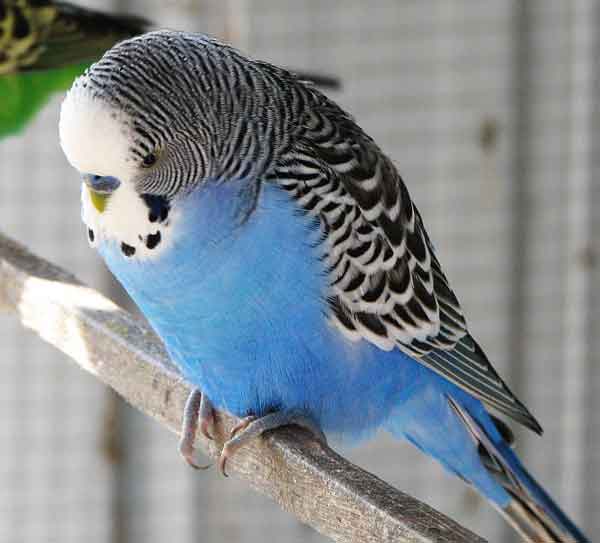
1. Mauve
A blue budgie with two dark factors results in a mauve color, the darkest of the blue factors. The darker shade is due to eumelanin melanin, which is responsible for dark colors
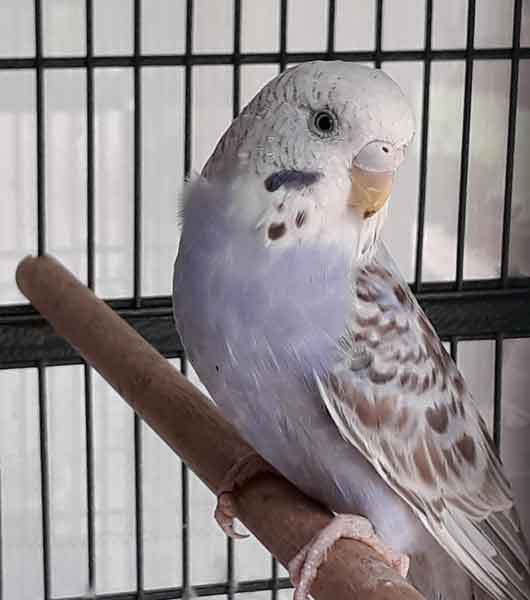
2. Cobalt Budgie
The cobalt variation of the blue budgie has one dark factor, resulting in the best blue of the variation.
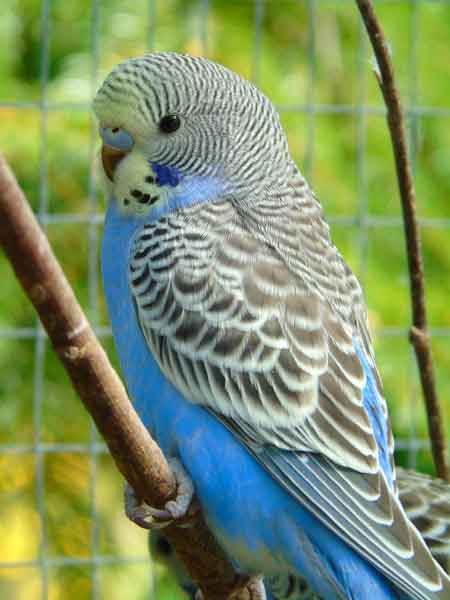
3. Sky Blue
Sky blue budgie has no dark factors and is the lightest of the blue variations.
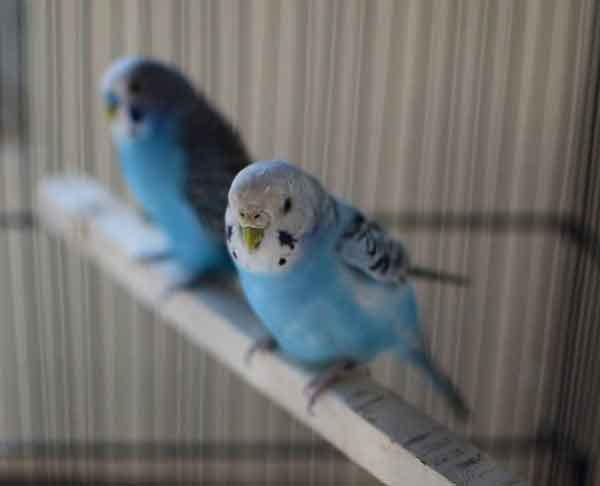
Are Blue Budgies Rare?
While green and yellow are the natural budgerigar colors, blue is also common. Blue budgerigars are among the color mutations done by breeders and first appeared in 1878. These budgies are rare in the wild, where green and yellow dominate, but they exist.
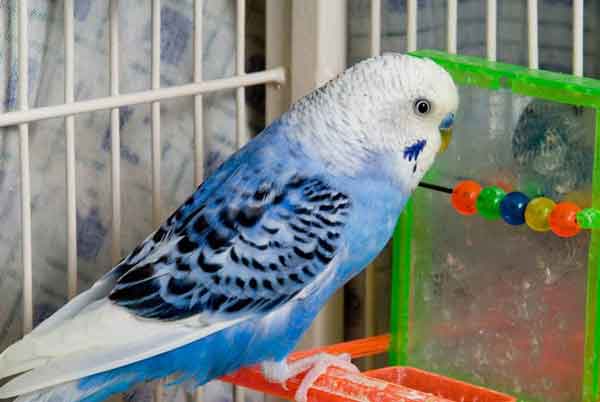
In captivity, blue budgies are not rare and have been used to create variations, including violet color. All the blue-based variations can be bred by limiting or adding their dark factor. Blue budgies are less common than green parakeets though they are not rare.
How Much Does a Blue Parakeet Cost?
Various factors like the breeder’s reputation and the bird’s age determine the buying price. A blue parakeet can cost anywhere between $10 and $100, depending on the store. The rare variations and colors are more expensive than the common ones.
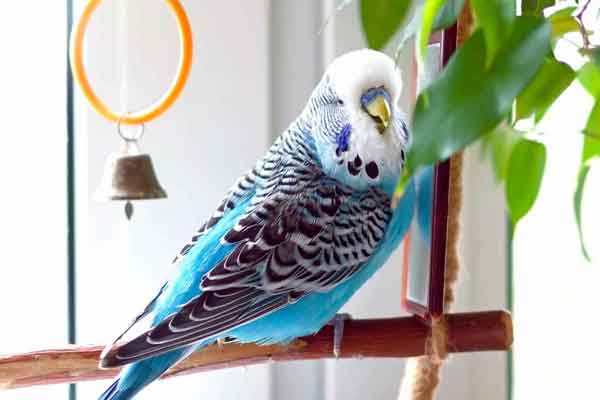
Age also affects price, especially if the older budgie is already tamed. Sometimes, owners prefer buying from a reputable breeder with a history of breeding healthy pets rather than an ordinary pet store. In case your last option is to buy from a pet store, request the bird’s information to learn its age and gender.
Are Blue Budgies Female or Male?
Many people wonder, which gender blue budgies are. Well, like all variations, blue budgies have both genders, female and male. Their genders are differentiated by observing some parts like the cere. An adult blue male budgie’s cere is blue, while that of a female is brown, white, or tan.
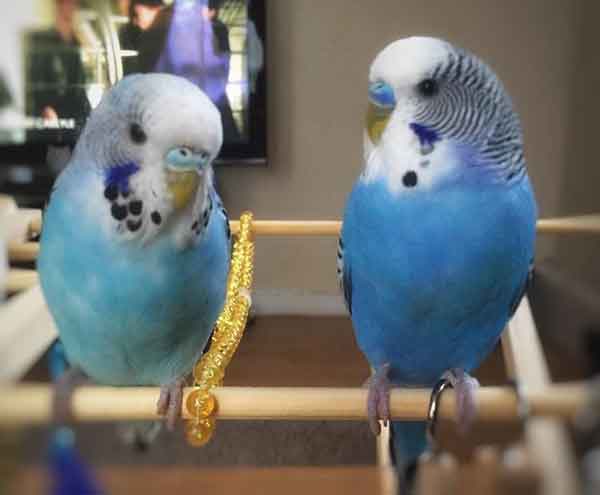
Female blue budgies lay eggs, then sit on them for 18 days, after which they hatch. Both parents take care of the chicks and feed them by regurgitating food in their mouths. A blue male and female budgie can produce chicks of other colors too.
How Do You Tell the Age of a Blue Budgie?
It’s sometimes hard to tell a budgie’s age, especially if you don’t have a record of its birth. Luckily there are various ways you can tell their age even without their prior information. Observe the budgie’s cap feathers, eyes, and cere, and use the table below to determine the age.
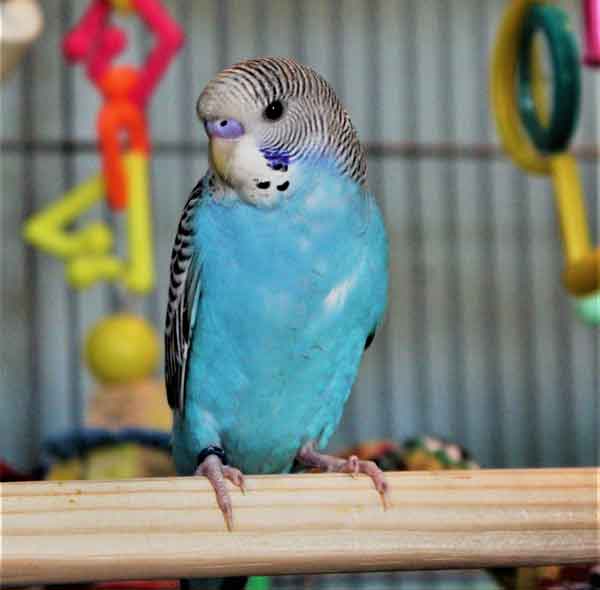
| Part | Condition | Possible Age |
| Cere | Purple, light blue, and pinkBlue, white, tan, and brown | Less than 4 months More Than 4 months |
| Cap Feathers | Stripes on its cap feather | Less than 4 months |
| Eyes | Black eyesDark gray irisLight gray iris | Less than 4 months Between 4 – 8 months Over 8 months |
Are Blue Parakeets Healthy?
Just like other variations and colors, blue parakeets are healthy. They are less likely to have inbreeding effects that rare varieties experience. However, their health depends on the diet offered by owners.
Also, blue budgies require a clean environment to remain healthy. A budgie infested with parasites is affected health-wise and can die if untreated. Their cage should also have bird toys to keep them active.
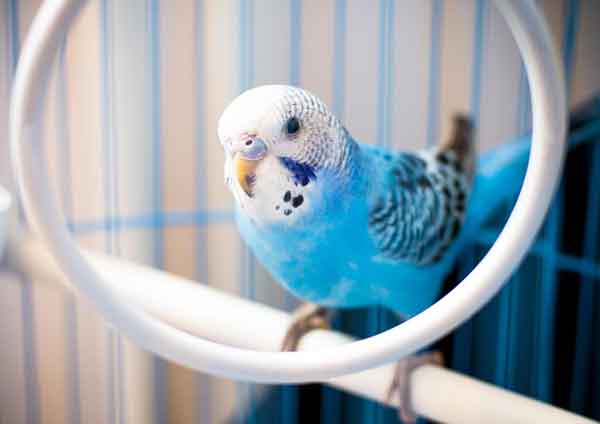
A blue budgie is not different from others. It requires proper care and a balanced diet. As you observe other measures, remember to provide seeds, pellets, fruits, clean water, and fresh veggies. This is the only way you will enjoy having a healthy blue budgie in your environment.
How Good are Blue Budgies as Pets?
If you’re passionate about blue budgies, you may need to know about their personality before buying one. Your blue budgie will be melodious and gentle, provided it is healthy. You will enjoy playtime with them because they are talkative and full of energy. What most people find most interesting is their ability to mimic human beings.
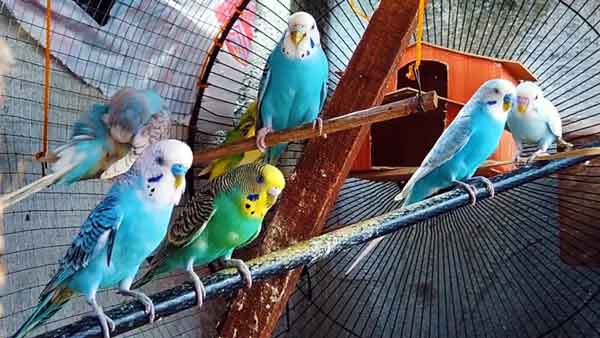
Blue budgies enjoy the company of their owners and their fellow budgies, whether blue or not. When happy, you hear them expressing themselves by making various voices. They are also curious and will show a willingness to learn new sounds daily.
However, things may change if your budgie is lonely. Instead of the jovial nature, you may have a stubborn and overly aggressive bird that bites every often. Also, instead of a sweet melody you may only hear irritating screams. Bringing your bird a mate will go a long way in this case.
What Is the Lifespan of a Blue Budgie?
If you’ve been wondering about the blue budgie’s lifespan, it is somewhere between 8 – 15 years in captivity. Captive budgies, including blue varieties, have a longer lifespan than wild ones. Mostly this is because of the fewer predator risks, less stress, and improved diet.
However, pet owners contribute to the bird’s lifespan, especially by improving their diet. If your bird eats healthy foods, it’s likely to have a longer and healthier life. Also, take your bird for a check-up regularly since diseases detected earlier get treated before they impact its health.
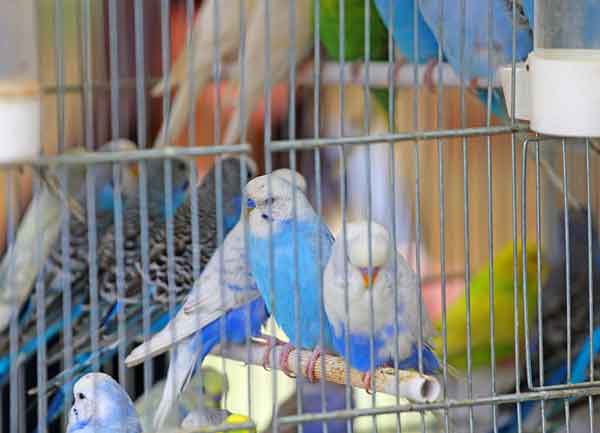
A well-fed and protected budgie can live for up to two decades on the higher side. Apart from malnutrition and related issues, your budgie may die early due to diseases. Working closely with your vet will help you evade these issues and ensure a long and fulfilling life. Some common diseases affecting budgies and other birds in the parrot family include;
- Parrot fever
- Obesity
- Goiter
A disease like goiter is triggered by poor feeding. Mostly it attacks budgies that feed on seeds alone because seeds contain extremely low iodine levels. Continued feeding of such meals exposes your budgie to thyroid problems, making it likely to develop goiter.
FAQ
With the increased variety of budgies, every bird lover is on a quest to learn as much as possible. On the topic of the blue budgies, there are a lot of questions that require an answer. We have got a few of them down below.
Budgies exist naturally in Australia, where the green and yellow varieties dominate. However, blue budgies are also occasionally witnessed, though not in large numbers. Blue budgies in the wild may be lost captive birds or those born there. The blue color is easier for predators to spot, one of the reasons they are uncommon in the wild.
In nature, budgies eat various seeds, fruits, and vegetables, serving them with the required nutrients. Captive birds, including blue budgies, also need these foods in their diets to be healthy. Budgies can also eat seed mix and greens bought from pet stores and groceries.
Blue budgies are loud and musical, but not more than other budgies because they are normal birds. They are actually considered to be quiet, only that they are a bit chirpy, especially in groups. You should expect to hear incessant noises sometimes because they are naturally energetic and give an environment some vibe.
Outro
Among the 30 budgie mutations, blue budgies are among the most popular ones. A blue budgie has blue feathers, black and white wings, purple face spots, and a white head. They appear in three varieties, with the dark factor making each unique.
Blue budgies are not rare and have been present since the late 19th century. Like other varieties, you can observe some of their body parts to know their gender and age. The bird’s health and lifespan strongly depend on the owner, who can improve it by providing a healthy diet.
